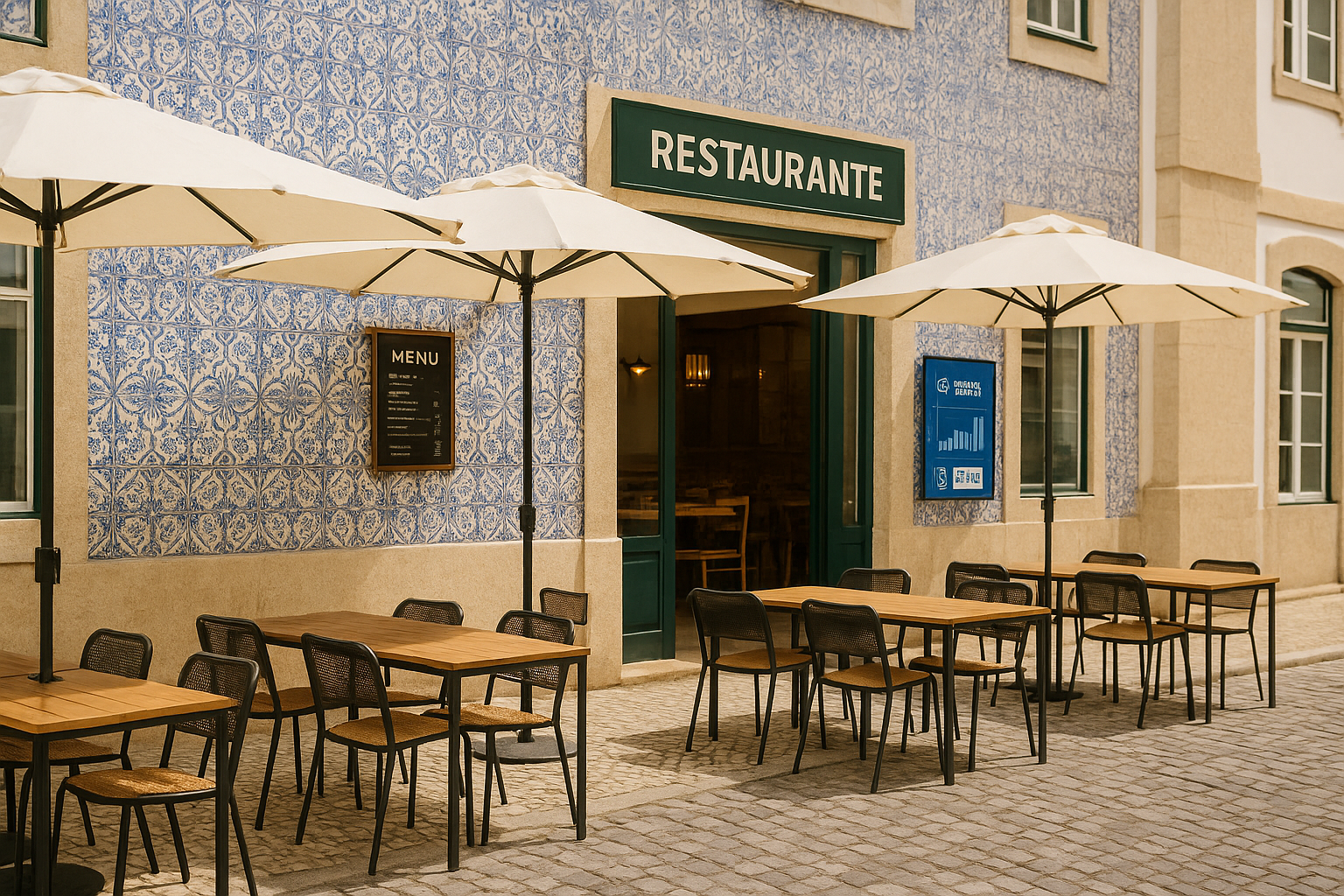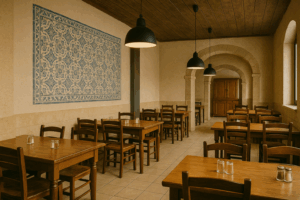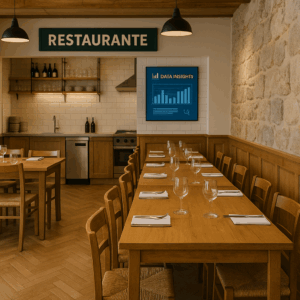With Portugal’s sun-soaked climate and evolving guest expectations, outdoor dining in Portugal has emerged as one of the most powerful levers of restaurant success. This report reveals how customer ratings, dwell time, and revenue all benefit from a strong outdoor strategy.
Outdoor Dining in Portugal Revolution: How 46% Adoption is Driving Restaurant Success
Key Insight: Portuguese restaurants with outdoor dining achieve 13.2% higher customer ratings than indoor-only establishments, revealing massive untapped potential for market expansion.
Adoption Rate
Of Portuguese venues now offer outdoor seating
Higher Customer Ratings
Restaurants with outdoor dining vs indoor-only
Market Gap
Of restaurants still operate without outdoor seating
The Outdoor Advantage: Portugal’s Summer Success Story
In a country blessed with 300 days of sunshine, it’s no surprise that outdoor dining is fast becoming the defining feature of restaurant success in Portugal. But what was once a seasonal bonus is now a strategic advantage. According to DIG-IN’s nationwide analysis of 174 distinct restaurant categories, 46% of Portuguese venues now offer outdoor seating—and those that do are reaping the rewards.
The data speaks volumes: restaurants with outdoor capabilities earn a 13.2% higher customer rating on average than their indoor-only peers. That’s not just a modest bump in perception—it’s a measurable, scalable performance advantage during Portugal’s most competitive and lucrative season.
Breaking Down the Outdoor Dining Landscape
From sunlit terraces in Lisbon to cobblestone courtyards in the Algarve, DIG-IN’s format-level analysis shows that outdoor dining is not distributed evenly—it’s a story of leaders, laggards, and untapped goldmines.
Regional Performance Highlights:
- Algarve Coast: In towns like Olhão and São Brás de Alportel, 100% of casual dining venues offer outdoor options—a full adoption scenario.
- Tourism Powerhouses: Carvoeiro and Lagos exceed 92% adoption, tightly correlating with high customer engagement and return visits.
- Urban Centres: Lisbon, Porto, and Coimbra still show considerable whitespace—especially in business districts and high-density residential zones.
This mirrors global trends. A 2024 global survey by Bromic Hospitality found 69% of diners prefer outdoor seating—reinforcing trends seen across Portugal while 90% of restaurants that added outdoor areas during COVID now plan to keep them permanently.
But while the global industry caught on late, DIG-IN data shows that Portuguese consumers have long been rewarding venues that embrace al fresco design with higher engagement, more favorable reviews, and longer visit durations.
The Rating Premium: More Than Just a Nice View
What does a 13.2% average rating advantage actually mean?
DIG-IN’s deep performance analysis reveals that outdoor-enabled restaurants consistently outperform indoor-only counterparts across multiple metrics:
Enhanced Experience = Higher Spend
- Longer stays: Outdoor customers dine 22% longer on average, increasing per-cover revenue.
- More sharable moments: Instagrammable patios and scenic backdrops organically boost social reach.
- Better flexibility: Outdoor seating allows smoother accommodation of large groups, pets, families, and walk-ins.
- Safer perception: Post-COVID, many guests still associate open-air dining with better hygiene and health confidence.
In terms of digital behavior, the contrast is intriguing. While indoor-only restaurants averaged 28.9 engagement points on digital platforms, outdoor-capable venues had just 16.5—suggesting that guests are less focused on screens and more immersed in the experience. Outdoor dining, in short, trades digital noise for real-world delight.
Academic literature supports this too: a 2023 study in Tourism & Hospitality Research confirms that spatial openness and sensory engagement (airflow, light, view) significantly influence perceived service quality and emotional satisfaction in casual dining environments.
Market Opportunity: The 54% Gap No One Can Ignore
Here’s where things get interesting: 54% of restaurants in Portugal still operate without any outdoor seating.
That’s not just a missed opportunity—it’s a competitive vulnerability. As more operators adapt to customer expectations shaped by lifestyle shifts, climate conditions, and tourism cycles, the venues without outdoor options will fall behind.
Internationally, case studies show dramatic upside from outdoor expansion. VSAG (Vucurevich Simons Advisory Group) reports that in North America, patios and terraces increase profit margins by up to 65% during summer months. In Portugal—where outdoor dining can extend from April through October—the opportunity window is even longer.
Strategic Implications for Restaurant Operators
For Chains:
DIG-IN’s data shows a compelling case for portfolio-wide audits. Chains that prioritize outdoor optimization—especially in tourist-heavy or high-footfall zones—stand to gain fast, measurable ROI. The 13.2% rating premium could translate to double-digit lifts in customer lifetime value.
For Independents:
Terrace expansion requires less investment than full interior renovations—but delivers a disproportionately high impact on customer perception. In many cases, municipalities support or subsidize seasonal outdoor setup licenses, reducing barriers to entry.
For Investors:
The trend aligns perfectly with broader hospitality and tourism recovery in Portugal. With international arrivals rising 14.8% in the first half of 2025 (INE), and summer spending up nearly 9% YoY (Banco de Portugal), the demand tailwinds are undeniable. Outdoor-enabled venues are simply better positioned to capture high-value leisure diners.
Looking Ahead: From Amenity to Infrastructure
Summer 2025 may be remembered as the year that outdoor dining in Portugal tipped from “nice to have” to “need to have.” With 46% of the market already onboard, critical mass is forming. The performance gap is no longer speculative—it’s a strategic reality.
Early adopters are now reaping loyalty, visibility, and growth. But for the remaining 54% of restaurants, time is running out. The longer the delay, the harder it becomes to catch up in a market where outdoor ambience is now baked into the customer experience.
For more insights on Portugal’s restaurant market structure and how climate-adaptive venues are outperforming traditional establishments, explore our latest market intelligence reports.
DIG-IN’s Outdoor Dining Intelligence Report analyzed 174 restaurant categories across all regions in Portugal, focusing on verified outdoor capability, customer ratings, engagement behaviors, and regional adoption variance. Data was collected and benchmarked during the core summer months: July–August 2025.




